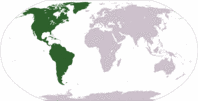Chamaedorea rossteniorum
| Chamaedorea (kahm-eh-doh-REH-ah) rossteniorum (ros-STEN-ee-or-uhm) | |||||||
|---|---|---|---|---|---|---|---|
 Male. Photo by Ian Edwards. | |||||||
| Scientific Classification | |||||||
| |||||||
| Synonyms | |||||||
|
| |||||||
| Native Continent | |||||||
|
| |||||||
| Morphology | |||||||
| |||||||
| Culture | |||||||
|
| |||||||
| Survivability index | |||||||
|
| |||||||
| Common names | |||||||
|
| |||||||
Contents
Habitat and Distribution
Chamaedorea rossteniorum is found in Moist or wet forest, 1000-1600 m alt., of Costa Rica, and Panama.Description
Trunk type: Clustering. Stem diameter: .64 centimeters, (.25"). Leaf detail: Bifid, dark green, heavily corrugated leaf surface. This is a very small, acaulescent palm, (nearly trunkless), with entire bifid, deeply notched leaves. Very similar to C. stricta. Editing by edric.
Culture
Requirements: Full shade to filtered light, this is an understory palm. Consistently moist soil, well drained position.
Comments and Curiosities
Chamaedorea are dioecious, male, and female flowers, on separate plants.
- IMAGE GALLERY
External Links
References
Phonetic spelling of Latin names by edric.
Special thanks to Geoff Stein, (Palmbob) for his hundreds of photos.
Special thanks to Palmweb.org, Dr. John Dransfield, Dr. Bill Baker & team, for their volumes of information and photos.
Glossary of Palm Terms; Based on the glossary in Dransfield, J., N.W. Uhl, C.B. Asmussen-Lange, W.J. Baker, M.M. Harley & C.E. Lewis. 2008. Genera Palmarum - Evolution and Classification of the Palms. Royal Botanic Gardens, Kew. All images copyright of the artists and photographers (see images for credits).
Many Special Thanks to Ed Vaile for his long hours of tireless editing and numerous contributions.





